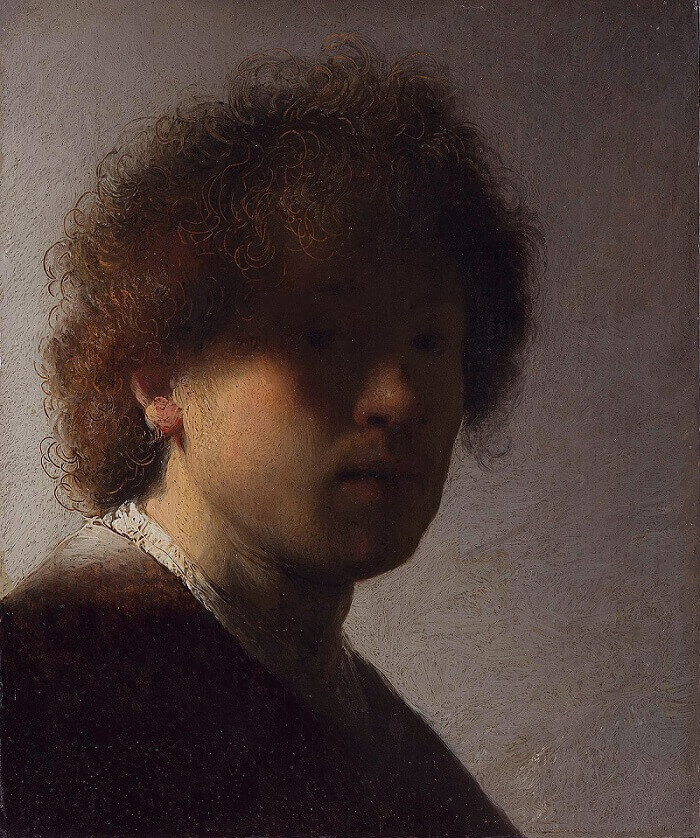Self-Portrait with Dishevelled Hair, 1628 by Rembrandt

In Self-Portrait with Dishevelled Hair, 1628, Rembrandt has shown himself full-face, a convention which was not often used. In spite of the youth of the sitter there is already a sense of gravity which was to increase many fold in his later pictures. Already there is his passion for fancy dress: he has depicted himself in armour, and his hair is elaborately arranged over his forehead. But it is the treatment of the light and shade which is the most important aspect of the picture.
The question of the sources of his peculiar lighting has often been discussed: the influence of Caravaggio can be said to be pervasive in a general sense following the arrival after 1620 of a whole new generation of artists, slightly older than Rembrandt, who had been trained in Italy, and even the arch-Mannerist Bloemaert made a number of quite convincing essays in Caravaggio's manner. The light falling on the right side of Rembrandt's face produces a deliberately dramatic effect-the head appears to emerge from the surrounding darkness, yet the softening of the edges on one side of the shoulder and the careful variation of the tonality of the background assures the three-dimensional quality of the sitter.
At this point it is difficult to foresee that Rembrandt was to paint himself over fifty times, and not all of these can have been because he had nothing else to paint. But the number of self-portraits does in fact increase in his last years when commissions were fewer, but even when he seems to be at his busiest, with commissions, with his family and business affairs, he never lost interest in painting himself.




















